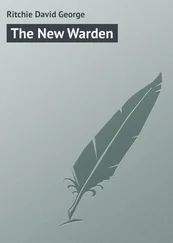Four maritime plants, which could be considered ‘sea-loving’, are frequently encountered growing on mountains at high altitudes in the company of alpine species. The first, thrift, a common coastal species, occurs on most of the highest mountains in Ireland. Hart encountered it at or close to the summits of the Mayo and Galway mountains – on Nephin and Mweelrea, Co. Mayo, both at 805 m, Croagh Patrick, Co. Mayo, at 675 m, and in the Twelve Bens, Co. Galway, up to 686 m. At Corraun, Achill Island, Co. Mayo, thrift grows abundantly on siliceous rocks at sea level, but then appears only above 366 m. It also grows at the summit of Carrauntoohil, Co. Kerry, at 1,039 m. Thrift adopts different shapes according to environmental stress. In its mountain habitat, subjected to grazing or particularly dry conditions it contracts into a dense cushion with short leaves and stems. Without stress, especially flourishing at sea level, it takes on a more straggly, less defensive aspect.
The sea plantain grows on the highest Galway and Mayo mountains up to 792 m. A curiously stunted variety, with broad leaves and a stem 3.8 cm high, was found by Hart at 701 m on the Askaheeraun ridge, Mweelrea, and on the summit of Ben Creggan (693 m), Co. Mayo. In the Twelve Bens the species ascends to 518 m. On Achill Island, Co. Mayo, it occurs continuously from the summit of Slievemore (671 m) to the sea-drenched cliffs below. This plantain also grows inland at low altitude levels, breaking with convention when it occurs around the shores of Lough Derg – some 40 km from the coast. It is also on the limestone pavements around Loughs Corrib, Mask, Carra, and Conn, Co. Mayo.
There are also outposts of maritime plants, including the two already mentioned and the following species, at the Killarney lakes, Co. Kerry, and around the shore of Lough Neagh in Northern Ireland. The white-flowered sea campion, normally found growing on sea cliffs, islands and coastal shingle, occurs on most of the Galway and Mayo mountains – on Croagh Patrick at 764 m, Mweelrea and Benlettery, Connemara, at 580 m and Birreencorragh, Co. Mayo, at 610 m. The common scurvygrass, common in dry salt marshes and coastal areas is also found in its subspecific form Cochlearia officinalis subsp. alpina in the Galty Mountains, Co. Tipperary, as well as joining the other three species already mentioned on the Binevenagh cliffs, Co. Derry. Finally, Hart also mentions a fifth species, the English stonecrop, as a member of the group which displays such aberrant distribution. A plant of rocky places, very frequently near the sea and rarely inland, this stonecrop is found on the Cork and Kerry mountains up to 801 m while in Wicklow it occurs up to 594 m and in Donegal up to 259 m.

Sea campion in its more natural lowland and coastal habitat, Little Saltee Island, Co. Wexford.
A plausible explanation for the mountain ascent of these maritime plants was put forward over 100 years ago by the Scottish naturalist Buchanan White who argued that they were part of the late glacial flora that was forced to migrate ahead of the expanding woodland cover during the Atlantic period. As the upper parts of the mountains were generally the only tree-free areas this is where the plants retreated to and survived until today. 10Work carried out by Watts on the flora of the Quaternary period in Ireland has shown that several species – likely candidates for migration up the mountain slopes – could be identified from the interglacial deposits at Kilbeg, Co. Waterford. 11The records included alpine meadow-rue (fruits), alpine clubmoss (spores), juniper (pollen, seed, needle), lesser clubmoss (micro and megaspores) and the sea plantain (pollen). Once established on mountain tops these, and many other species, found themselves safe from the re-advancing glaciers when another cold spell clamped down on the Irish landscape.
Principal locations for alpine and arctic-alpine species
The Wicklow Mountains and uplands
The Wicklow Mountains and uplands are the most extensive area of granite in Ireland and greater than any in Britain. The region is of considerable natural beauty and topographical diversity, where glacier-scoured river valleys and glens clothed in broadleaved woods host enchanting lakes; where large tracts of blanket bog are presided over by granite summits and dominated by Lugnaquillia Mountain (925 m); where there is a swaddling coverage of coniferous plantations, and where cliffs and corries are frequent. The vegetation found there is characteristic of the upland and mountain habitats of many other sections of Ireland.
During the winter of 1901–2 George H. Pethybridge, a young English plant physiologist, teamed up with Praeger to start a survey of the vegetation lying south of Dublin, including the Wicklow uplands. 12According to White this was the start of the modern investigations of Irish vegetation. 13Pethybridge & Praeger distinguished four zones: (i) the lowest, or the littoral zone which is of little or no interest to botanists; (ii) farmland, that merged into (iii) hill pasture at about 275 m (with gorse to begin with and western gorse at higher altitudes) before giving way to (iv) heather moorland which developed at around 380 m and continued upwards to the highest – flora-poor – summits.
The dry heath of the hill pasture, dominated by western gorse, heather and bell heather, is typically found in Counties Dublin and Wicklow from about 70 m to 400 m. The dry heath community was not described in detail and had to wait for its first precise description by Clark in 1968. 14Where the heath had been burnt about four years previously, Clark found that western gorse formed a mat of vegetation 20–30 cm tall. In areas untouched by fire for more than ten years the gorse was taller – 30–50 cm – and often more open, leaving room for bell heather, heather and a sparse herb layer of mainly sheep’s fescue and some common bent.
Western gorse, abundant in eastern Ireland and more local in the west, is characteristically found in coastal, lowland and sub-montane habitats, especially in the Wicklow Mountains where it occurs typically in the upper hill pasture areas before the vegetation changes to heather moorland at about 400 m. The somewhat similar but much taller gorse (also known as furze or whin) occurs typically at lower altitudes in the Wicklow hills and elsewhere in Ireland.
Higher up in the heather moorland Pethybridge & Praeger described areas, especially on the flat summits, dominated by deergrass and common cotton-grass. On the flat summit of Lugnaquillia Mountain they found a thin skin of vegetation, dominated by the woolly fringe-moss, bilberry, heath bedstraw, heath rush, stiff sedge, the moss Polytrichum commune and colonies of the alpine clubmoss.
The Wicklow uplands are a disappointment for mountain plants when compared with some of the highland sites in the northern and western counties. Both the arctic-alpine roseroot and the mossy saxifrage, first reported in 1897 and 1927 respectively, have not been found recently and are feared to be extinct. 15St Patrick’s cabbage and fir clubmoss are found on the mountain itself. The occurrence of St Patrick’s cabbage is an oddity because Lugnaquillia Mountain is very much an outlying station, far away from the main centre of distribution in Cork and Kerry. Some 13.5 km northeast of Lugnaquillia Mountain a rocky escarpment at 557 m overlooking Lough Ouler, near Tonelagee, hosts alpine lady’s-mantle and, together with a site on the Brandon Mountains, Co. Kerry, these are the only localities where the species has been seen in Ireland since 1970. Alpine lady’s-mantle is tall for an arctic-alpine, reaching up to 20 cm. Its leaves, unlike those of its close relative lady’s-mantle, are divided to the base and underneath are silvery grey with hairs. The flowers are small (3 mm) and pale green. Also growing on the Lough Ouler escarpment is alpine saw-wort which belongs to the daisy family. It is a short, stout perennial that looks somewhat like a thistle with fragrant purple flowers in August-September. Both alpine lady’s-mantle and alpine saw-wort were first recorded in Ireland from the mountains of ‘Keri’ by the Welsh antiquarian and naturalist Edward Lhwyd in 1699. Alpine saw-wort has now been reported from 26 sites in Ireland, at altitudes over 300 m. It is thought to be declining. 16
Читать дальше













